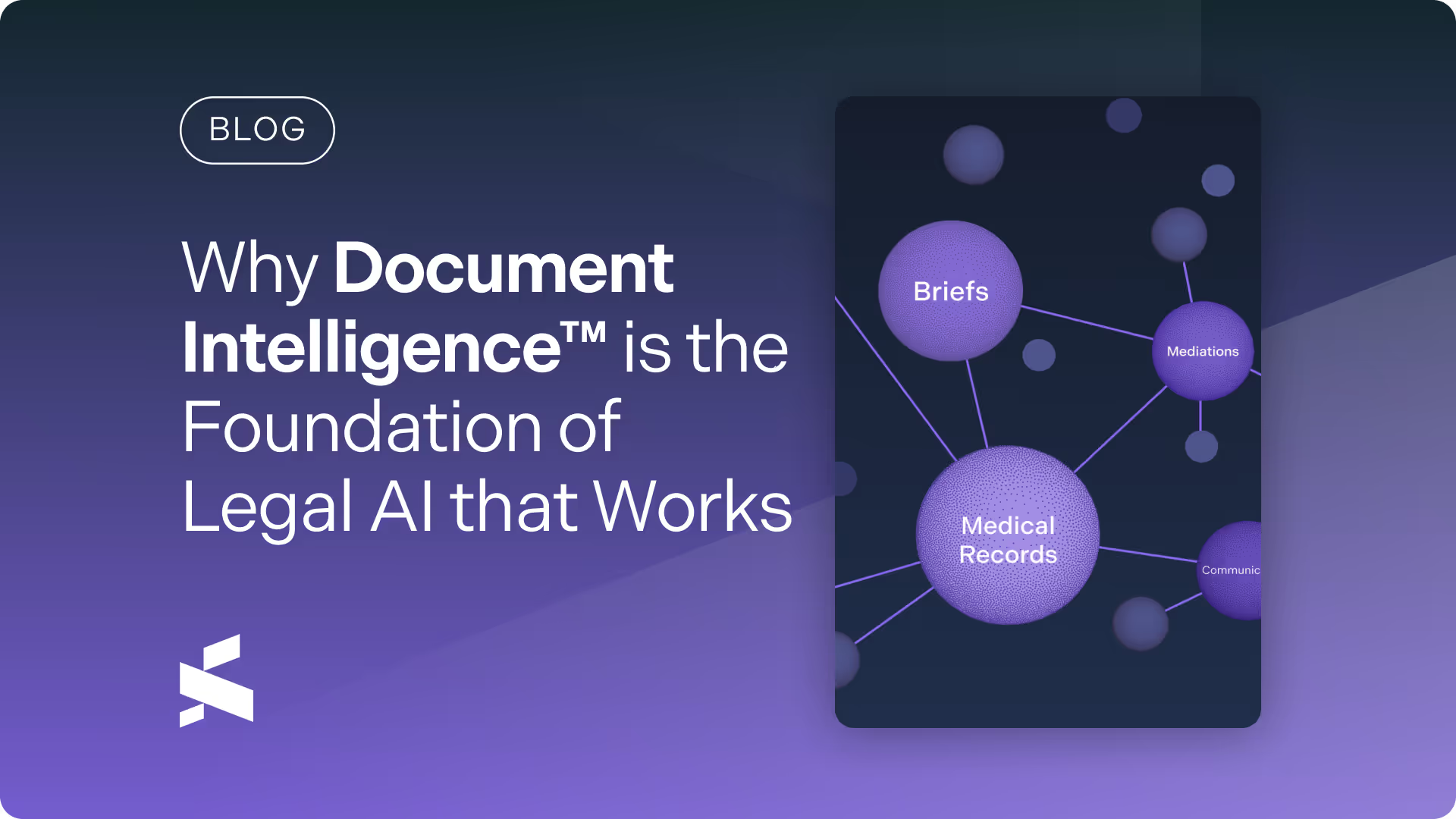Click to listen to a NotebookLM audio overview of this article:
In law, the documents tell the story. And in personal injury law, that story can sprawl across hundreds or thousands of pages of intake notes, police reports, surgical records, expert evaluations, treatment logs, and many other documents.
No single paralegal or attorney can hold all case details in their head. At least not accurately, fast enough, or at scale.
This is the challenge Supio solves with a data-first Document Intelligence™ platform designed to understand what matters in a PI case and power the next generation of legal AI tools.
If Supio’s suite of productivity apps (AI Assistant, Medical Chronologies, Demand Drafting, Case Signals, Case Economics) are the visible surface of a firm’s AI toolkit, then Document Intelligence™ is the engine that makes them possible.
Document Intelligence™ is built for the way personal injury actually works
Unlike general legal tech or LLMs like ChatGPT or Claude, Document Intelligence™ is grounded to recognize and parse 112+ document types that actually show up in litigation - from SOAP notes and operative reports to MRI scans, billing ledgers, lien statements, and provider letters.
At its core, Document Intelligence™ is a fusion of:
- A specialized AI platform, built to understand PI case documents
- A structured data layer that maps key facts, dates, parties, diagnoses, and values across files
- A secure, HIPAA-compliant delivery system designed for privacy and safety
It integrates seamlessly with practice management systems like Litify and SmartAdvocate, while supporting industry-standard formats like Word, Dropbox, and PDF.
This isn’t AI bolted on top of legal data. This is actually AI powered by legal data.
The job of Document Intelligence™ is to read everything, remember everything, and synthesize it into true case understanding.
When Supio ingests a case file, Document Intelligence™ immediately classifies each document type, extracts key details like injury descriptions, treatment events, provider names, billing totals and links them into a coherent picture.
Think of it as a timeline-aware graph of the entire case file, built automatically and quietly in the background.
The results are remarkably precise:
- 96.6%+ extraction accuracy across fields
- 97.4% citation precision in downstream applications like Draft Builder and AI Assistant
More than AI-powered search
The tech industry has become enamored with retrieval-augmented generation (RAG) - a technique that allows large language models to look things up before answering. But retrieval is only as good as what gets retrieved.
Supio takes a different approach.
Document Intelligence™ doesn’t only retrieve documents. It reads them, interprets them, and builds structured representations of what they say.
When you ask the AI Assistant a question about a case, the answer comes grounded in fact because the facts were structured beforehand. When you generate a motion, a demand letter, or an exhibit list, you’re not starting from a blank slate. You’re drafting from the full intelligence of the case.
How Document Intelligence™ powers Supio’s suite of AI productivity apps
Document Intelligence™ is the power source behind every Supio application:
- In Chronologies, it creates detailed medical event timelines based on extracted treatment data
- In AI Drafting suite, it pre-fills legal documents like demands, disclosures and interrogatories and responses to defense side’s documents with facts from the case files
- In Case Signals, it surfaces hidden insights like gaps in treatment, undervalued procedures, or missing provider notes that may affect claim value
- In Case Economics, it links financial insights to underlying medical documentation, giving attorneys a real sense of risk vs. return
How Supio handles massive case files without missing critical details
Most generative AI platforms struggle with long documents. The bigger the file, the more performance degrades. Traditional systems might attempt to stuff an entire PDF into a model’s memory. Or worse, arbitrarily slice it into dozens of meaningless fragments. The result: shallow understanding and imprecise output.
Supio takes a fundamentally different approach.
Document Intelligence™ breaks large case files into clean, meaningful units called records – individual office visits, diagnostic events, treatment summaries, or provider notes. These records serve as the atomic unit of analysis, enabling the AI to target precisely what matters and ignore what doesn’t.
This structure is critical. It means that:
- Supio can process virtually unlimited document sizes without loss of fidelity
- Search and retrieval is narrowed to exactly the relevant records for a given legal or medical question
- The resulting output – whether in a chat, a timeline, or a draft – is grounded in coherent, case-specific context
Your firm’s built-in head start
Most AI platforms marketed to law firms today are glorified autocomplete. They rely on open-ended prediction without structure, accuracy, or legal context. They may be fun to experiment with but they aren’t reliable. And they certainly don’t scale across a busy PI docket.
“What I hear from our customers is that these tools empower paralegals and attorneys to focus on more strategic and valuable tasks and improve client communication and satisfaction,” said Jerry Zhou, Supio CEO. “They uncover hidden insights that are nearly impossible for humans to catch at scale.”






